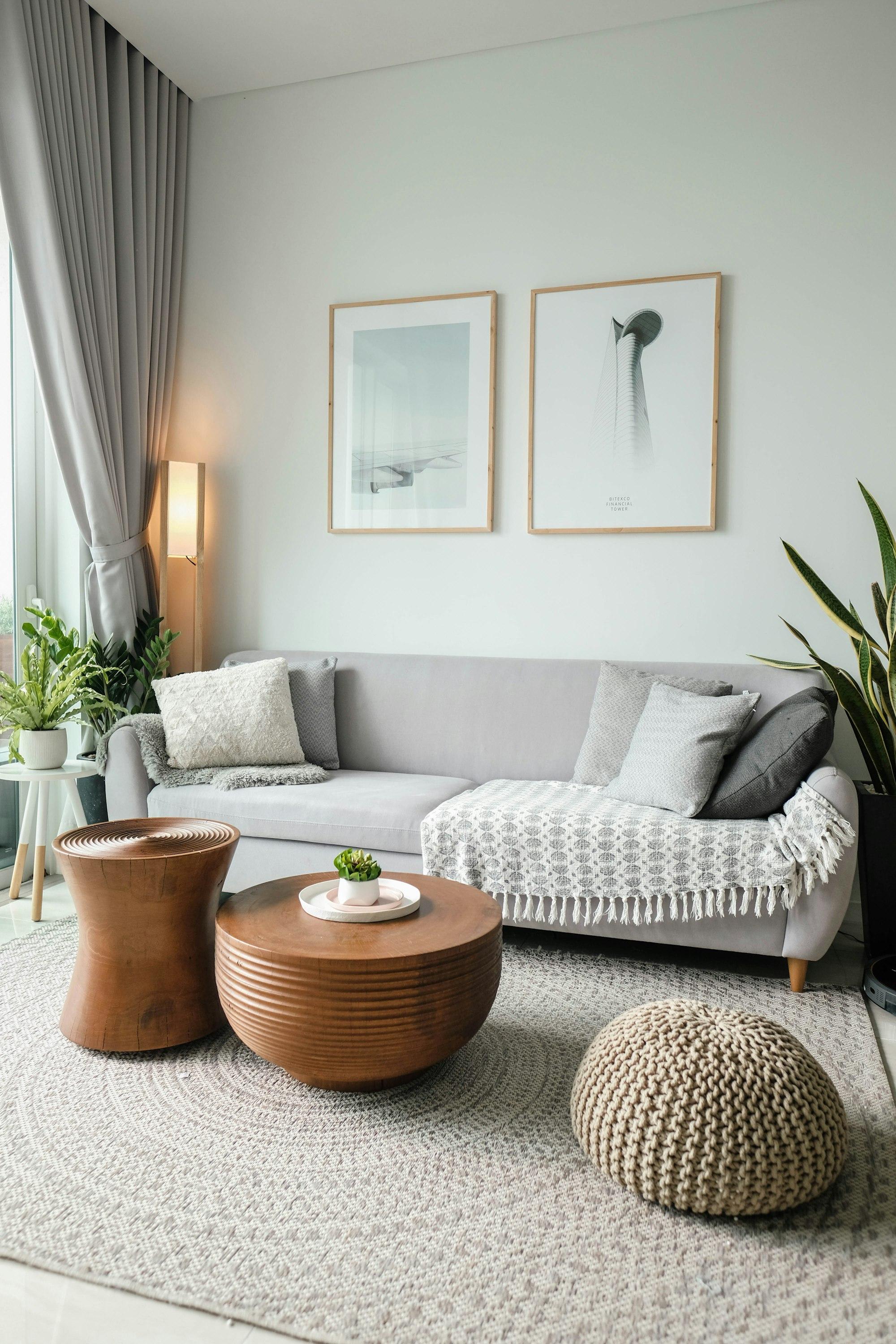The Rise of Scandinavian Design in Modern Homes
Scandinavian furniture blends simplicity, functionality, and timeless appeal, making it a favorite in modern homes. Learn how to incorporate its clean lines, natural materials, and calming aesthetic to create a sustainable and serene living space.

Photo by Minh Pham
Scandinavian furniture is a cornerstone of contemporary design, celebrated for its simplicity, functionality, and timeless appeal. With its serene and stylish aesthetic, it has become a go-to choice for creating tranquil living spaces. But what makes this design so popular, and how can you incorporate it into your home?
What Defines Scandinavian Design?
Rooted in the Nordic ethos, Scandinavian design emphasizes minimalism, functionality, and natural materials. Its clean lines and practical beauty emerged in the early 20th century as a response to ornate styles, prioritizing accessibility and craftsmanship.

Philosophy of Simplicity
Scandinavian design values harmony, quality over quantity, and creating spaces that feel both inviting and practical. Natural materials like wood, leather, and wool bring warmth and texture, connecting indoor spaces to the natural world. This approach promotes well-being, reflecting the belief that thoughtful design enhances everyday life.
Key Features of Scandinavian Furniture
Scandinavian furniture combines sleek, understated design with expert craftsmanship. Pieces often showcase clean lines, gentle curves, and versatile functionality—ideal for modern living. From extendable tables to modular sofas, these designs are built to adapt, making them perfect for smaller or urban spaces.
Incorporating Scandinavian Furniture into Your Home
Infuse your home with Scandinavian style by focusing on color, materials, and layout. These elements work together to create a cohesive and calming environment.

Neutral Color Palettes
A hallmark of Scandinavian design, neutral colors like whites, grays, and beiges create a light, airy feel. Add depth with soft pastels or muted tones and maximize natural light to enhance the ambiance. Accents like artwork or cushions in subtle hues can introduce personality without disrupting the cohesive look.
Natural Materials and Textures
Light woods like birch and pine are staples of Scandinavian design, used in flooring, furniture, and accents. Pair these with cozy textiles like wool and linen for a welcoming atmosphere. Layer textures, such as a sleek leather chair with a chunky knit throw, to add depth and visual interest.
Minimalist Layouts
Declutter and organize to create an open, serene environment. Multi-functional furniture like storage ottomans or sofa beds maximizes utility while maintaining a clean look. Arrange furniture to encourage movement and natural light flow, achieving the signature Scandinavian openness.

Why Scandinavian Furniture is a Smart Choice
Beyond its aesthetic, Scandinavian furniture offers practical benefits that suit modern lifestyles.
Quality and Durability
Known for high craftsmanship, Scandinavian furniture is built to last. Its timeless designs and robust materials make it a long-term investment, ideal for creating stylish yet functional spaces.
Sustainability
Scandinavian design emphasizes eco-friendly practices, using responsibly sourced materials and sustainable production methods. By choosing these pieces, you support a greener lifestyle and reduce environmental impact.
A Calming Environment
Neutral tones, natural materials, and uncluttered spaces foster tranquility. Adding elements like indoor plants or organic fabrics enhances the sense of calm, creating a sanctuary that nurtures well-being.
Conclusion
Scandinavian furniture’s rise in modern homes speaks to its enduring appeal. By blending minimalism, quality, and sustainability, it creates spaces that are not only beautiful but also deeply functional and serene. Whether you’re drawn to its aesthetic or its practicality, Scandinavian design offers endless possibilities for transforming your home into a harmonious retreat.
Quick facts
Is IKEA considered Scandinavian?
Yes, IKEA is considered Scandinavian as it originated in Sweden and embodies the minimalist and functional design principles typical of Scandinavian design.
Why is Scandinavian furniture so expensive?
Scandinavian furniture is often expensive due to its high-quality materials, craftsmanship, and timeless design. The focus on sustainability and premium finishes also contributes to its cost.
How to identify Scandinavian furniture?
Scandinavian furniture is characterized by minimalist designs, clean lines, functionality, and the use of natural materials like wood and leather. Light colors and simplicity are key identifiers.
What is the famous Swedish furniture company?
IKEA is the most famous Swedish furniture company, known for its affordable, functional, and minimalist designs.
What does IKEA mean in Swedish?
IKEA stands for Ingvar Kamprad, Elmtaryd, and Agunnaryd, the founder's name and the names of his family farm and hometown in Sweden.
Is Scandinavian design out of style?
No, Scandinavian design remains popular due to its timeless appeal, functionality, and focus on simplicity and sustainability.
What is the best wood for Scandinavian design?
The best wood for Scandinavian design includes light-toned woods like birch, pine, and oak, which enhance the minimalist and natural aesthetic.
How do I make my house look Scandinavian?
To make your house look Scandinavian, use neutral colors, minimalist furniture, natural materials, and maximize natural light. Add cozy elements like textiles and warm lighting.
Why do Danish use teak?
Danish designers often use teak for its durability, warm tones, and rich grain, which align with Scandinavian design's focus on functionality and natural beauty.

Mihai Crisan
Software Engineer at Spoken
Mihai is a dedicated software engineer at Spoken, where he combines his passion for technology with his professional expertise. As a tech geek, he is always on the lookout for innovative solutions to simplify and enhance people's lives through cutting-edge technology. Mihai’s curiosity drives him to explore and implement new ideas that make a real impact.
Read more

